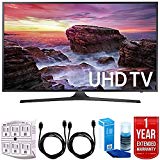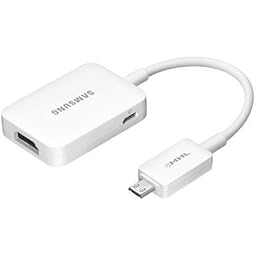Comment on Samsung MHL 2.0 HDTV Adapter by ChicagoCPA.
Works beautifully,
I have tried both the ET-H10FAUWEGWW (via ebay) and ET-H10FAUWESTA (via Samsung’s website) and both of them have the same model number stamped on the unit itself and use the same UPC/EAN#: 8806085519558.
The box from Samsung has a holographic sticker on it that none of the others had, saying Samsung Original Mobile Enhancement and it was the only one without a plastic tray.
With my Samsung S4, I am getting crystal clear 1920×1080 60Hz edge to edge display (with no over/under scan) on my home made 15.6″ 1920×1080 monitor as well as our Samsung TV set via an HDMI cable.
HDMI to DVI has been a particularly difficult challenge with MHL 1.0. However with this MHL 2.0 adaptor, I am getting the same 1920×1080 60Hz signal on both my Flatron W2246 and Dell U2212HM.
I can also listen to the sound via the phone’s headphone jack while it is plugged in (since monitors do not have speakers).
I have not needed to provide power to the adaptor. There is a micro usb port for power, but I have not needed to use it (unless I want to charge my phone).
Nowhere on the box does it specifically say it is for MHL 2.0, but the description on various websites say that this is the main reason for this adapter’s existance.
Note that it is designed for Samsung’s 11pin micro MHL 2.0 pin configuration, which I do believe that no one else is using yet. Which means it is for the Samsung Note II, S3 and S4 and that is about it right now. Only the S4 however will utilize the MHL 2.0 aspects of this adaptor. With the Note II and S3 it is supposed to behave just like the MHL 1.0 adapters that have been out for a few years now.
I have been on a quest since I first got my HTC Droid DNA to have an Android Phone project a 1920×1080 image onto portable monitor for remote desktopping so that I can stop carting around my very heavy, very expensive (please do not steal this if I leave it in a hotel room or the car while on vacation) notebook computer.
Turns out the HTC Droid DNA was not quite capable of this, so I got the Samsung Galaxy S4 and the SmartDock. Turns out that the SmartDock would also not spit out a 1080p signal to a monitor.
With this adapter, I finally have my solution. A pocket sized thin remote computer subsidized every two years by Verizon.
One downside is that I had to tweak my Otterbox case for the plug to fit as it is wider than any other MicroUSB plug I have seen.
0

